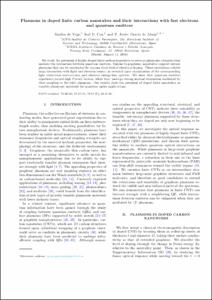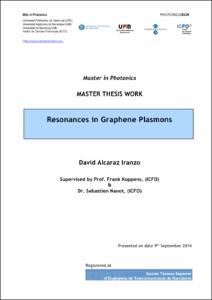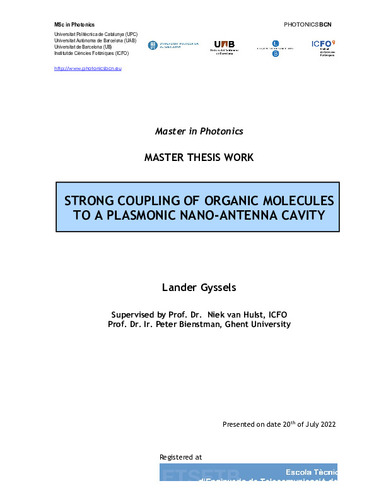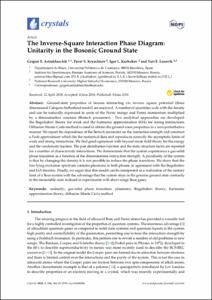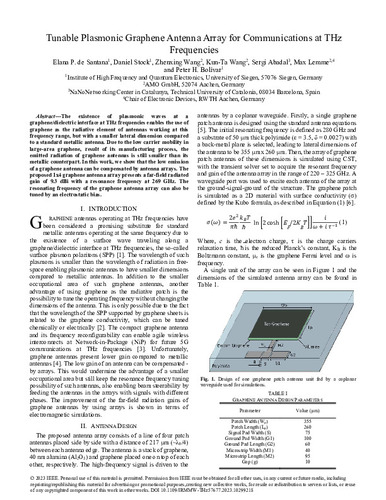Exploració per tema "Plasmons (Physics)"
Ara es mostren els items 21-31 de 31
-
Plasmons in doped finite carbon nanotubes and their interactions with fast electrons and quantum emitters

(APS, 2016-08-31)
(APS, 2016-08-31)
Article
Accés obertWe study the potential of highly doped finite carbon nanotubes to serve as plasmonic elements that mediate the interaction between quantum emitters. Similar to graphene, nanotubes support intense plasmons that can be ... -
Pronounced Linewidth Narrowing of an Aluminum Nanoparticle Plasmon Resonance by Interaction with an Aluminum Metallic Film

(ACS, 2015-09-18)
(ACS, 2015-09-18)
Article
Accés restringit per política de l'editorialAluminum nanocrystals and fabricated nanostructures are emerging as highly promising building blocks for plasmonics in the visible region of the spectrum. Even at the individual nanocrystal level, however, the localized ... -
Propagation and localization of quantum dot emission along a gap-plasmonic transmission line

(OSA, 2015-11-02)
(OSA, 2015-11-02)
Article
Accés obertPlasmonic transmission lines have great potential to serve as direct interconnects between nanoscale light spots. The guiding of gap plasmons in the slot between adjacent nanowire pairs provides improved propagation of ... -
Quantum surface-response of metals revealed by acoustic graphene plasmons

(Nature, 2021-06-01)
(Nature, 2021-06-01)
Article
Accés obertA quantitative understanding of the electromagnetic response of materials is essential for the precise engineering of maximal, versatile, and controllable light–matter interactions. Material surfaces, in particular, are ... -
Resonances in graphene plasmons

(Universitat Politècnica de Catalunya, 2014-09-09)
(Universitat Politècnica de Catalunya, 2014-09-09)
Projecte Final de Màster Oficial
Accés obert[ANGLÈS] Graphene is used as a novel, versatile plasmonic material. The most common way to implement resonant light-plasmon coupling is to etch graphene into periodic nanostructures, which is invasive. Here, we study a ... -
Scalable and tunable periodic graphene nanohole arrays for mid-infrared plasmonics

(2018-09-12)
(2018-09-12)
Article
Accés obertDespite its great potential for a wide variety of devices, especially mid-infrared biosensors and photodetectors, graphene plasmonics is still confined to academic research. A major reason is the fact that, so far, ... -
Self-biased reconfigurable graphene stacks for terahertz plasmonics

(2015-03-01)
(2015-03-01)
Article
Accés obertThe gate-controllable complex conductivity of graphene offers unprecedented opportunities for reconfigurable plasmonics at terahertz and mid-infrared frequencies. However, the requirement of a gating electrode close to ... -
Simulations of radiative shocks and jet formation in laboratory plasmas

(IOP Publishing, 2007)
(IOP Publishing, 2007)
Text en actes de congrés
Accés restringit per política de l'editorialWe present the simulations of two relevant hydrodynamical problems related to astrophysical phenomena performed by three different codes. The numerical results from these codes will be compared in order to test both the ... -
Strong coupling of organic molecules to a plasmonic nano-antenna cavity

(Universitat Politècnica de Catalunya, 2022-07-20)
(Universitat Politècnica de Catalunya, 2022-07-20)
Projecte Final de Màster Oficial
Accés obertThe optical properties of molecules can be changed by the presence of a cavity. If the cavity is resonant with a certain transition of the molecules, the molecules couple with the cavity. The coupling is characterized by ... -
The inverse-square interaction phase diagram: unitarity in the bosonic ground state

(Multidisciplinary Digital Publishing Institute (MDPI), 2018-06-08)
(Multidisciplinary Digital Publishing Institute (MDPI), 2018-06-08)
Article
Accés obertGround-state properties of bosons interacting via inverse square potential (three dimensional Calogero-Sutherland model) are analyzed. A number of quantities scale with the density and can be naturally expressed in units ... -
Tunable plasmonic graphene antenna array for communications at THz frequencies

(Institute of Electrical and Electronics Engineers (IEEE), 2023)
(Institute of Electrical and Electronics Engineers (IEEE), 2023)
Text en actes de congrés
Accés obertThe existence of plasmonic waves at a graphene/dielectric interface at THz frequencies enables the use of graphene as the radiative element of antennas working at this frequency range, but with a smaller lateral dimension ...


